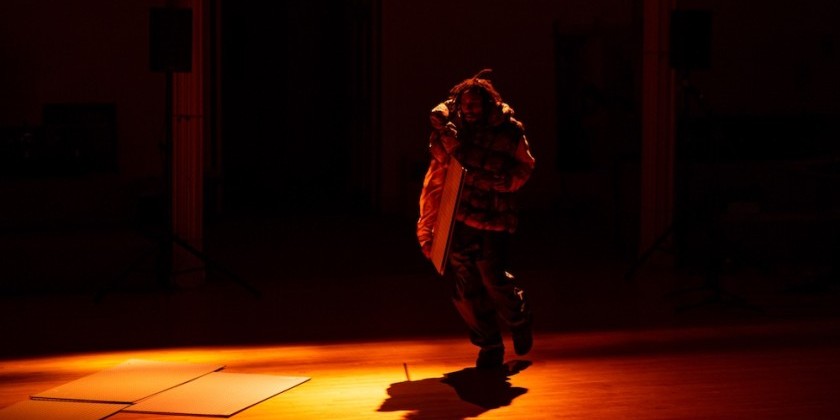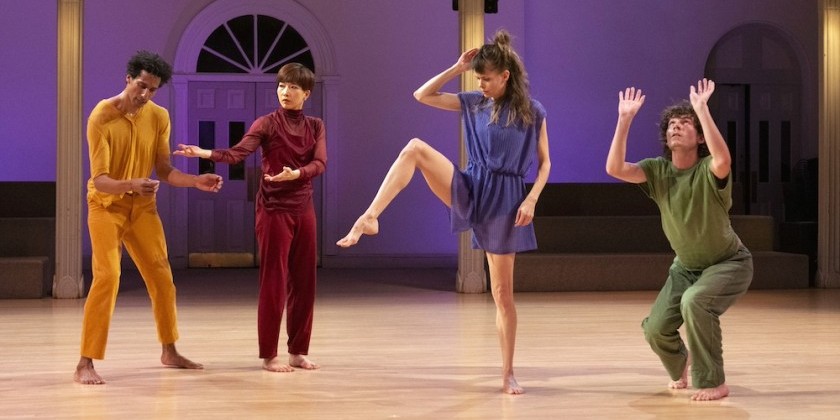Impressions of jill sigman/thinkdance's "(Perma)Culture"

Danspace Project, June 19-21, 2014
Choreographic design: Jill Sigman
Dancers/collaborators: Danica Arehart, Maria Bauman, Donna Costello, Anice Jeffries, Kate Kernochan, Paloma McGregor, Larissa Sheldon, Jill Sigman
Timekeeper: Mary Suk
Lighting design: David Ferri
Ceramic objects: Danica Arehart
Clothing consultant: KymKym
Dancers lie facedown on the floor. They sway from side to side and sometimes roll gently for a few feet until they bump into one another, like small pebbles or pieces of driftwood coming in with the tide. Timekeeper Mary Suk serenely takes her place at one corner of the stage.
Jill Sigman's latest work, (Perma)Culture, performed at Danspace Project, consists of a series of movement scores. Suk indicates when the time has come to move on to the next task. Sometimes her bell marks an immediate change in what takes place on the stage, and other times it initiates a gradual transformation. As in the driftwood-inspired opening, Sigman and her fellow dancers often appear more like animals or plants than humans. They are creating an environment, a habitat. This effect is intensified by their occasional use of earth-toned ceramic pieces and rectangles of sod as props.

The work is engaging throughout, and though the various sections sometimes feel disparate, this thread of the natural world is what unites them. Its presence is sometimes understated, as when the dancers move about the space, each absorbed in their own movement task but occasionally finding unison: creatures exploring their space. It is tongue-in-cheek when Kate Kernochan holds her hand like a microphone, smiles like a variety show performer, and demonstrates birdcalls. It is poignant when Larissa Sheldon crumples onto the floor, as if dead, and the others silently gather around to look at her. It is visceral when the dancers divide into small groups, each pounding out a different rhythm with their feet as they forge different paths through the space, merging and separating again.
Throughout the dance, a few performers step out for certain sections, watching attentively from the sides. Their peaceful gaze contributes to the air of serenity that envelops the work.

The piece winds to a slow end when the dancers bring out ceramic objects of various sizes, some as large as a dinner plate and others as small as a leaf. They separate into small groups and begin stacking and unstacking the objects. Some of their spontaneous sculptures look like stone trail markers, others like tiny villages.
Then, the performers approach audience members who are seated on all sides. They ask, “Would you like to come build with us?” Gradually, spectators trickle onto the stage to start participating in the project. The gentle clinking sounds the objects make as they are place on top of one another and on the floor create a subtle music, reinforcing again the pervasive feeling of peacefulness. This music is accented by the laughter and whispers of people as they build.
The initial excitement of audience participation wears off, but the feeling of serenity does not. Sigman and her dancers occasionally break away from the building project to dance, and seeing this up close is a treat. Now the audience, seated on the stage, is awash in that same ocean where the piece began.












